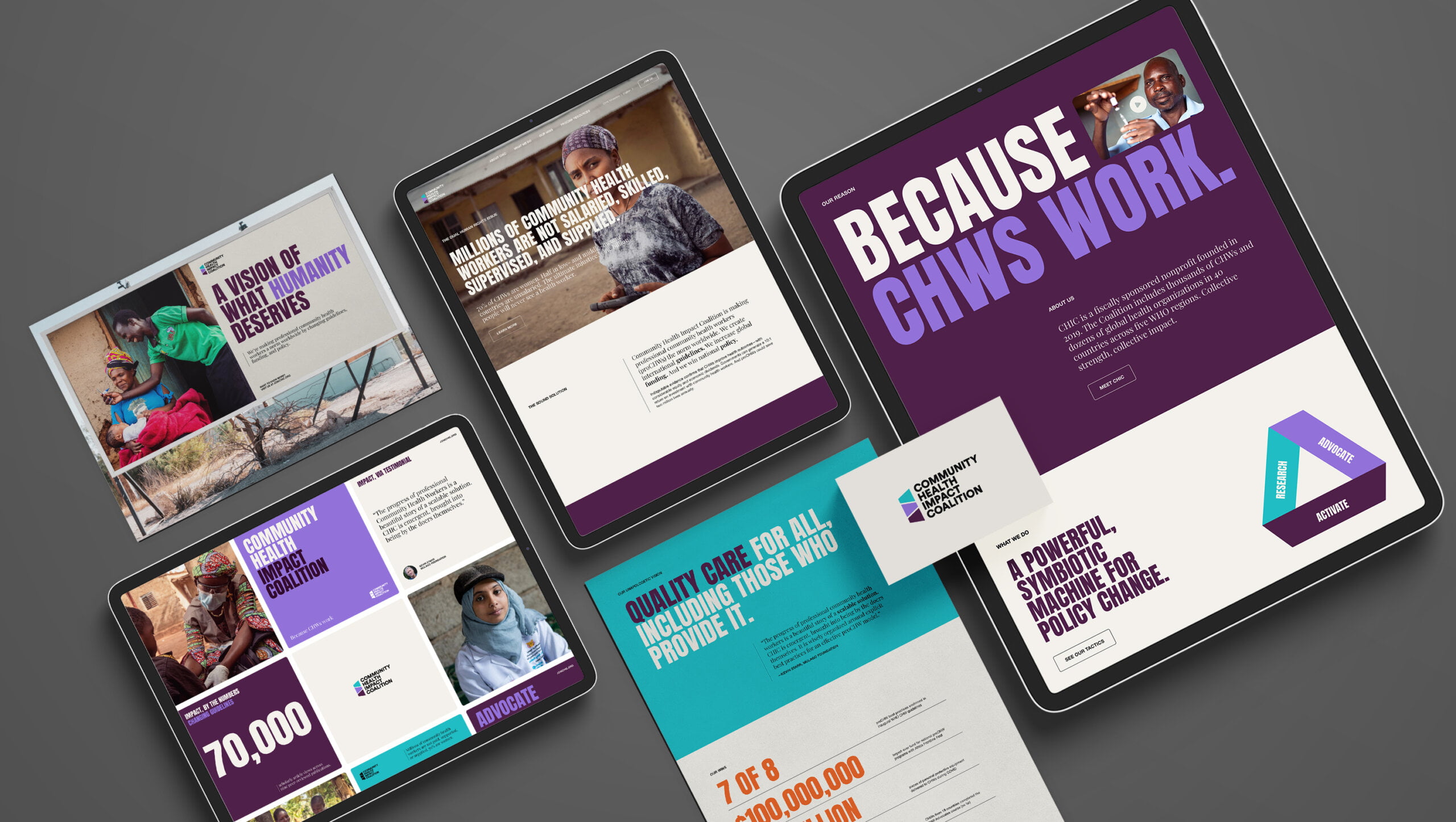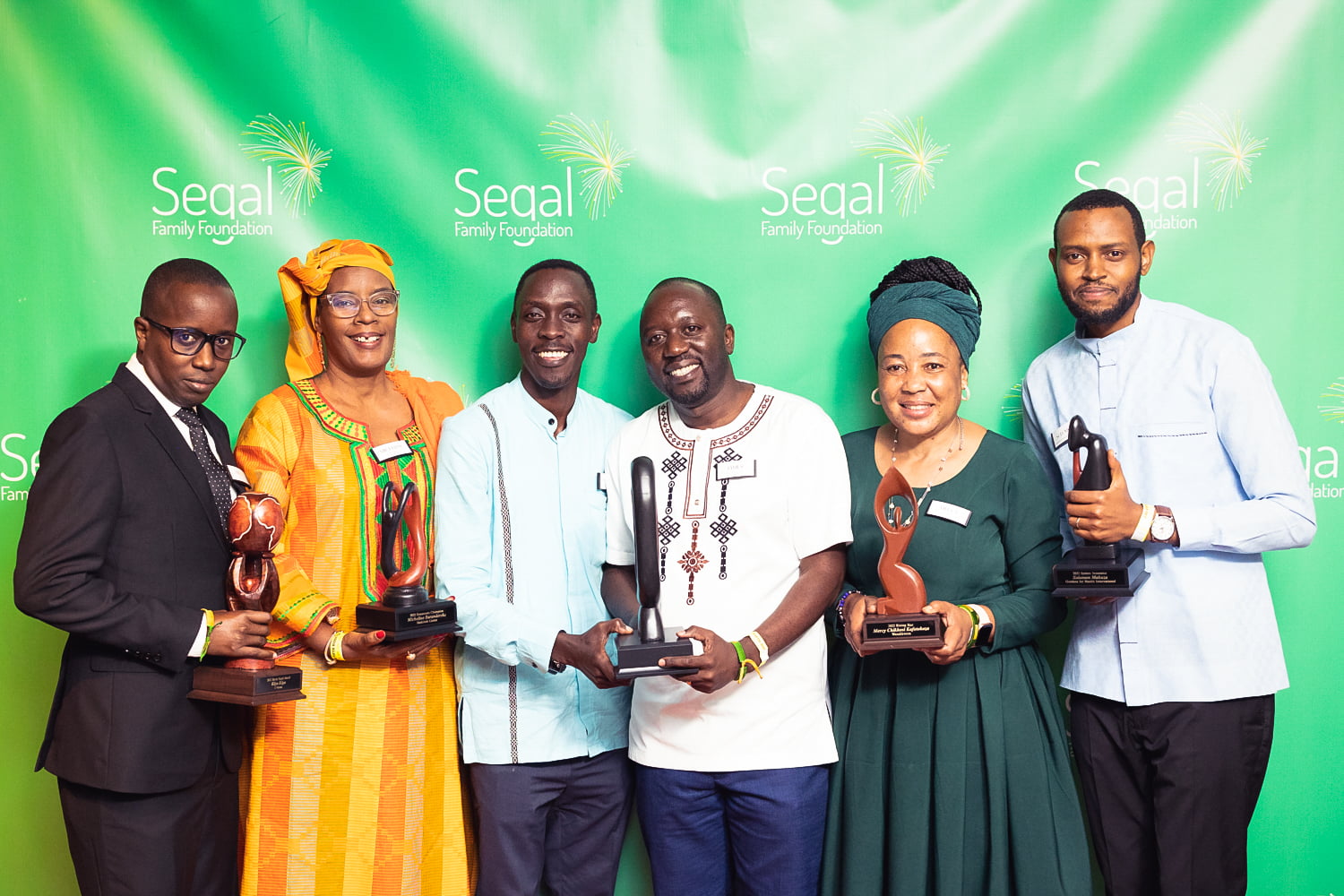Brand first, funding second.
More fundraising itself can’t fix your fundraising — to get funding, be fundable and findableTM

Too many nonprofits are unseen, unheard, and underfunded.
Time and time again, nonprofit leaders are forced to fight two levels of inequality. The injustices faced by their communities. Plus, the unjust reality that most of their own organizations are stuck in the nonprofit starvation cycle.
Look at the sobering data. Only one in 1,000 nonprofits will grow beyond a small business (yes, your nonprofit is a business too). Even in the United States — where philanthropic foundations have more than a trillion dollars sitting in the bank — 88% of nonprofits struggle on less than $500,000 USD annually.
It’s a valley of death with nowhere to grow. As a result, many measures such as the United Nations Sustainable Development Goals are off track or reversing.
But more fundraising itself can’t fix your fundraising.
To break this nonprofit starvation cycle, we must tackle the problem differently. Of course you need to fundraise, eventually. But if your income has stalled, stop what you’re doing. Stop chasing donations. Gather your leadership team and do this instead:
To get funding, be fundable and findable.TM
Being fundable means showing donors why you exist, what you do, who will do it, where you’re going, how to get there, and when it will be done. That’s your theory of change and your strategic plan. And that can fix your fundraising.
Being findable means occupying a distinct space in the minds of your ideal funders, and routinely communicating your promises to them. That’s your positioning strategy and your marketing communications. And that can also fix your fundraising.
Get ready for the secret.
Being fundable and findable is your brand. Your brand consists of your theory of change, strategic plan, positioning strategy, and marketing communications. And your brand — not just more fundraising itself — can fix your fundraising.
To be clear, both brand and fundraising are critical. And inseparable. It’s not about the order of importance, it’s about the order of operations.
Brand is the engine; fundraising is the fuel.
Brand is aspiration; fundraising is realization.
Brand is the foundation; fundraising is the roof.
Brand is differentiation; fundraising is the monetization.
Brand is the value proposition; fundraising is the value exchanged.
In other words: brand first, funding second.

Our client Community Health Impact Coalition wisely prioritized their brand early on. During an evaluation just 2.5 years post inception, they identified brand communications as a rate-limiting step toward future funding. So after nine months of partnership with Mighty Ally, we launched the CHIC brand above in early 2023.
Tough love for you brand skeptics.
Some of you despise the very idea of brand. The word itself gives you the capitalistic creeps.
But that sentiment isn’t helping your cause. Because too many leaders wrongly think that brand is only a private-sector thing. That brand makes us compete with nonprofit peers. That brand doesn’t apply to small organizations. That brand is too expensive, is all about design or creative campaigns, and shouldn’t matter if the work is impactful.
Yet, none of those things is true. Here’s what is:
“You have a brand whether you like it or not. Really, the only choice you have is how actively you want to shape and manage that brand.”
INGRID SRINATH, PHILANTHROPY GEEK AND CIVIL SOCIETY DEFENDER
If the term brand gives you the shivers, call it identity, clarity, unity, direction, anything. We’re talking about brand vs. brand-ing here. Brand is mostly strategy, much of which can be done internally with zero hard costs. So call it whatever you want. As long as you do it.
Because even a major grantmaker like Christopher Stone at Open Society Foundations says, “the brand of a nonprofit is a strategic asset central to the success of the organization itself.”
Why your brand must come first.
Think about it further.
✓ Theory of change (brand) precedes M&E and impact.
✓ Positioning (brand) precedes innovation and partnerships.
✓ Marketing communications (brand) precedes funding and advocacy.
✓ Strategic planning (brand) precedes HR, finance, and ops.
In reality, nonprofit and foundation leaders have countless necessary priorities.
But brand is first. And brands require precise, ongoing management. Not from junior comms staff. From the top leadership down.
Wait, you say: any social sector organization must be impact first.
That sounds good to the purists out there, but it simply can’t be the case. Think about it: even just your name is your brand. Every organization has at least a name before engaging the community it serves. And a name before approaching funders.
Hopefully, you even have a simple logo and pitch deck before you start doing your work. You don’t gather a few co-founders together, rush into the field, and serve. That would be volunteering.
So your brand exists from the moment you fill out a company registration form. That’s true whether you build on it from there or switch gears to funding and programs.
Which many sadly do.
Impact is also never immediate. Nobody has figured out how to solve poverty and injustice. And you have to gain the first customers or beneficiaries before impact can occur. Which requires communications.
In the private sector, leaders develop the brand from day one. That vision and value proposition are what early investors and customers are buying.
Even established corporations manage their brands first, only capitalizing on new markets and new income streams second.
I’m not arguing brand is the only thing that matters. We’re not naive, distant consultants — we’ve built six businesses ourselves, including Mighty Ally. So we know firsthand the competing priorities. But we are arguing it comes before anything else.
So if funding has stalled — if you’re stuck at $500k or even $5M per year in size — stop what you’re doing.
Stop the fundraising chase.
Stop the starvation cycle.
Gather your leadership team. And don’t leave the room until you figure out how to be fundable and findable — before anything else.
Because good brands cost some time and money, but bad brands cost a fortune.
“Doers: until proven otherwise, your first priority is to learn to clearly, concisely, and compellingly communicate what it is that you do.”
KEVIN STARR, MULAGO FOUNDATION
What about foundations?
A foundation’s most valuable asset is not money.
Instead, your brand is your best investment.
Sounds radical. But our brand first, funding second philosophy applies to donors too. Not just doers.
Here’s why.
“At their core, foundations and nonprofits are in the business of developing and advancing big, bold ideas,” says Sean Gibbons from The Communications Network. “If you want your ideas to take hold and win, you need to communicate and communicate well. It’s not an option anymore — it’s a necessity.”
In other words, foundations are changemakers too. They just have grantmaking as an intervention vs. direct implementation.
But without a bold brand, grantmaking is scattered. Far too often, foundations give across a wide range of issues. Sometimes it’s what the founders personally care about — whims, not strategic reasons. Far better is a tight focus and attacking a single issue or two.
Further, we’re in this together — doers, donors, and intermediaries. And if foundations believe their grantees need a robust theory of change, tight positioning, good comms, and solid strategic plan (brand) to maximize funding and advance social justice — foundations should have the same.
Not to mention the internal benefits. With a strong brand strategy, it’s simply easier for foundation staff to do their jobs. Like who to grant to, and not. And what post-investment support to provide. (Related side note: we see as much staff frustration and turnover at foundations as at nonprofits.)
And finally, a purposeful brand gives foundations more significant influence with peer funders and other donors — all in the interest of grantees.

Segal Family Foundation is the second largest U.S. grantmaker in Sub-Saharan Africa. And they’ve always been a brand exemplar within the Big Bang Philanthropy circle. Between their own communications plus the many post-investment support options, we believe they’re proving a brand first, funding second philosophy.
Evidence of our brand first point of view is proven in a funder study called Communication Matters, published in SSIR. It analyzed hundreds of grantmakers.
Here are some takeaways:
✓ 86% of foundations agree that when donors communicate about an issue, it helps their grantees work more boldly.
✓ Foundations rank as a goal of communication: 1, build nonprofit comms capacity; 2, build public will; 3, influence policy and practice.
✓ “We can amplify every dollar we spend if the programs we fund find more recognition, more partners, and can influence those who make policies that affect the people we serve.”
✓ “Tell me one major, successful social change initiative that did not have very strong communications as part of its success.”
Then here are three quick examples of how foundations are doing brand first, funding secondTM well:
✓ Acumen’s patient capital thesis, fellowships, Acumen Academy, plus Jacqueline Novogratz’s books and thought leadership. The brand is far more impactful than its ~$150 million in all-time investments. (For reference, MacKenzie Scott’s average single grant is larger than Acumen’s total giving in a year).
✓ Segal Family Foundation’s message of local leadership, the popular annual conference, African Visionary Fellowship, Social Impact Incubator, and in-house partnerships team driving tens of millions in follow-on funding. The brand does more good than its eight-figure annual giving.
✓ Pace Able Foundation’s hands-on advisory, startup expertise, servant leadership, Partner Stories blog, and co-funder collaborations. The brand effects exceed the millions in giving.
What’s the most important commonality in all three examples? The brand behind the grant.
In short: let the individual donors and high-net-worths be funding first. They don’t need a brand. Or to be fighting the good fight. They have day jobs. And they’re just the cash machine.
But if you have a staffed foundation, it’s your responsibility to go beyond the dollar.
“Communication is not an expense that reduces our ability to make grants. It is a strategic investment that allows us to magnify the impact of our grantmaking dollars, by attracting co-funders and energizing others to get involved.”
ANONYMOUS U.S. GRANTMAKER
Where to start?
Every nonprofit needs tight messaging, strong storytelling, sharp visuals, and cohesive communications to attract and retain donors.
Bold brands are built from the inside out. Before you can be findable externally, you must be fundable internally. That’s why your theory of change and strategic plan must come before your positioning strategy and marketing communications.
We guide early- and growth-stage nonprofits through this process using our Fundable/Findable FrameworkTM.
Read more articles
Ready to get fundable and findable?
We engage three ways: consulting, training, and field building.
